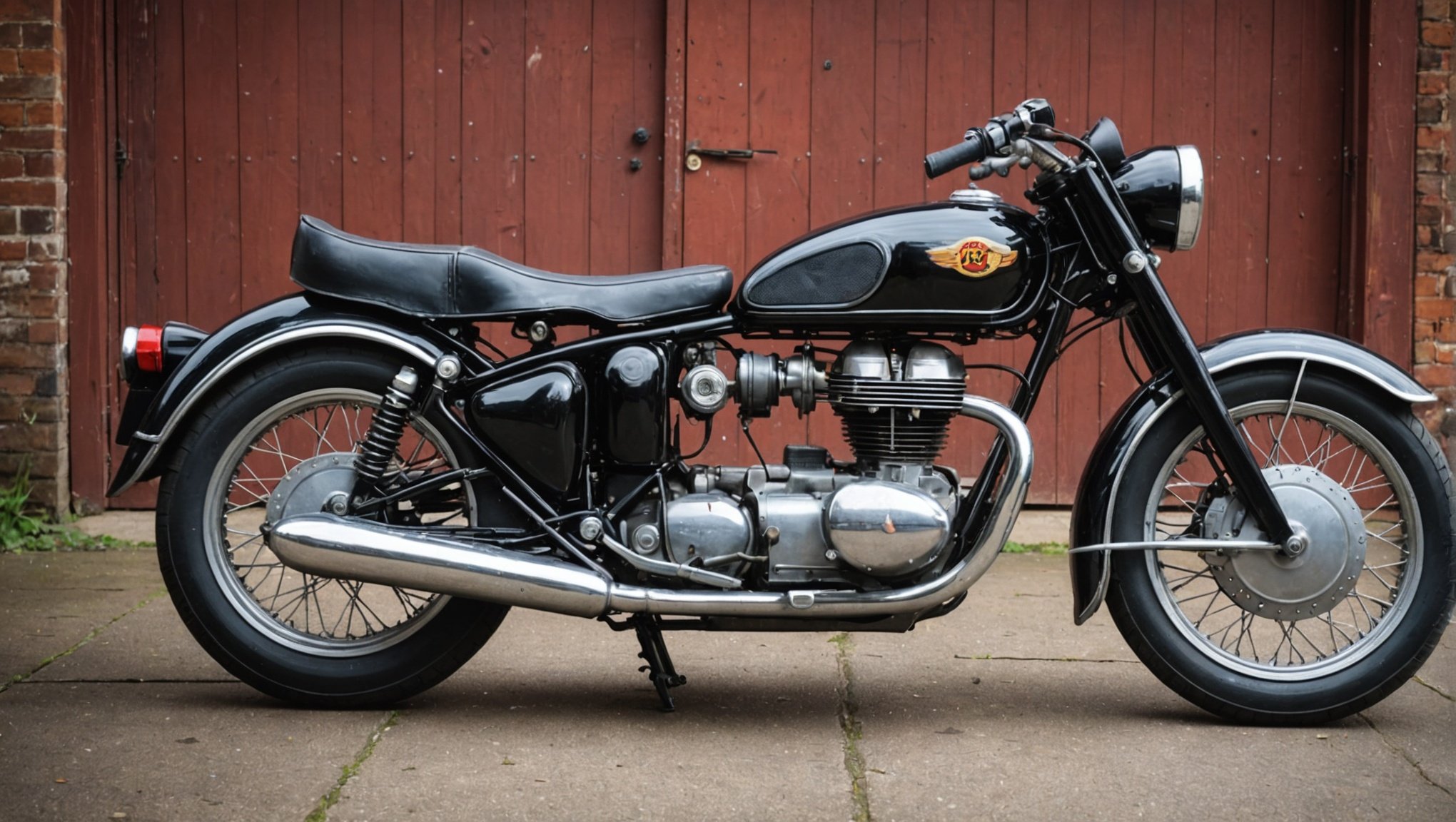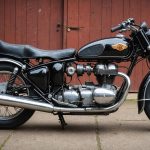Respraying your British vintage motorcycle is an art that combines nostalgia with practical skill. Choosing the right paint not only enhances its aesthetic but also ensures durability against the elements. This guide navigates through various paints, finishes, and techniques tailored specifically for vintage bikes. Discover how to balance tradition with modern technology to achieve a stunning and lasting finish, while avoiding common pitfalls. Get ready to transform your motorcycle into a timeless masterpiece!
Preparing for a Motorcycle Respray
Before embarking on a motorcycle respray, understanding the preparation process is essential. Proper preparation ensures a smooth application and long-lasting results. The first step involves thoroughly cleaning the surface to remove any dirt, grease, or old paint. This can be achieved using a degreaser and sandpaper to create a smooth base.
Next, inspect the motorcycle for any dents or scratches that need attention. Using body filler can help repair these imperfections, creating a flawless surface for the new paint. Once repairs are complete, sanding the entire surface again ensures the paint adheres properly.
Priming is a crucial step in the DIY paint selection process. Applying a suitable primer helps the paint bond to the surface and enhances its durability. Choose a primer compatible with the selected paint type—whether it's enamel, acrylic, or urethane—to avoid any adverse reactions.
Also read : Mastering Radar Detector Setup and Calibration for Luxury Cars on UK Motorways
Finally, ensure you have the necessary safety gear, including masks and gloves, especially when working with urethane paints due to their toxic nature. By following these preparation steps, you set the stage for a successful and professional-looking motorcycle respray.
Choosing the Right Finish
Selecting the ideal paint finish for your motorcycle can dramatically affect its aesthetic and durability. Different finishes offer unique advantages, and understanding these can help you make a more informed decision.
Types of Paint Finishes
Gloss Finish: This option provides a shiny, reflective surface that enhances the depth of colour. Gloss finishes are popular for their vibrant look but can highlight imperfections and scratches more easily.
Matte Finish: Offering a non-reflective, smooth appearance, matte finishes are perfect for a modern, understated look. They excel at hiding minor imperfections, though they can be more challenging to clean.
Satin Finish: Acting as a middle ground between gloss and matte, satin finishes provide a soft sheen. They are versatile, complementing both modern and vintage aesthetics. Satin finishes hide imperfections better than gloss and are easier to maintain than matte.
Selecting the Right Finish
When choosing a finish, consider the motorcycle's style and your personal preference. For vintage aesthetics, a satin finish can enhance classic lines without overpowering them. Always remember that the finish impacts not only the look but also the maintenance and longevity of the paint.
Color Selection and Matching
Choosing the right color matching approach for your motorcycle respray can significantly influence its overall look. Whether you're restoring a vintage motorcycle or aiming for a custom design, understanding color dynamics is crucial.
Classic Color Schemes
Classic color schemes are timeless and ideal for enhancing the vintage motorcycle aesthetic. Popular choices include deep reds, classic blues, and rich blacks. These colors not only preserve the authenticity of older models but also add a touch of elegance. Opting for these shades can evoke nostalgia while maintaining the motorcycle's original charm.
Techniques for Matching Original Colors
For those aiming to restore a motorcycle to its original glory, precise color matching is essential. Techniques involve using manufacturer color codes or employing spectrophotometers to identify exact shades. This ensures that the new paint seamlessly blends with any existing parts, maintaining the bike's historical integrity.
Tips for Custom Mixing Colors
Custom color mixing allows for personal expression and unique designs. Experiment with different pigments and finishes to create a distinctive look. Consider using a test panel to preview the final result before applying it to your motorcycle. This approach ensures your custom color is exactly as envisioned, offering a tailored and personalised touch.
Application Techniques for a Professional Finish
Achieving a professional finish on your motorcycle requires mastering the right painting techniques. Whether you choose a spray gun or aerosol cans, each method has its own benefits.
Recommended Application Methods
- Spray Gun: Offers precision and a smoother coat, ideal for larger surfaces. It requires an air compressor and some practice to perfect.
- Aerosol Cans: More accessible for beginners and suitable for smaller areas. They provide convenience and ease of use but may require more layers for an even finish.
Step-by-Step Guide to Preparing the Surface
- Clean the Surface: Use a degreaser to remove dirt and oil.
- Sand the Area: Smooth out imperfections with fine-grit sandpaper.
- Apply Primer: Use a primer compatible with your chosen paint to ensure proper adhesion.
Tips for Achieving an Even Coat
- Maintain Distance: Keep a consistent distance from the surface to avoid runs or drips.
- Use Steady Strokes: Apply paint in even, overlapping strokes for uniform coverage.
- Multiple Thin Layers: Build up the paint in thin layers rather than one thick coat to prevent imperfections.
These application methods and tips will help you achieve a sleek, professional look on your motorcycle.
Troubleshooting Common Issues
Painting a motorcycle can present challenges, but identifying and addressing these issues ensures a smooth finish. Common painting problems include bubbling, peeling, and uneven coverage. Troubleshooting these problems effectively is crucial for a successful DIY project.
Identifying Common Painting Problems
- Bubbling: This occurs when air is trapped under the paint layer. It can result from painting in humid conditions or applying paint too thickly.
- Peeling: Often caused by poor surface preparation or incompatible paint layers. It can also occur if the paint hasn't adhered properly.
Solutions for Fixing Issues
- For Bubbling: Sand down the affected area, ensure the surface is clean and dry, and reapply the paint in thin layers.
- For Peeling: Strip the peeling paint, sand the surface thoroughly, and apply a primer before repainting.
Maintenance Tips Post-Respray
To preserve the finish, regularly clean the motorcycle with mild soap and water. Avoid harsh chemicals that can damage the paint. Waxing the surface can also protect against UV rays and maintain the paint's shine. Regular checks for chips or scratches allow for prompt repairs, ensuring the motorcycle remains in top condition.















